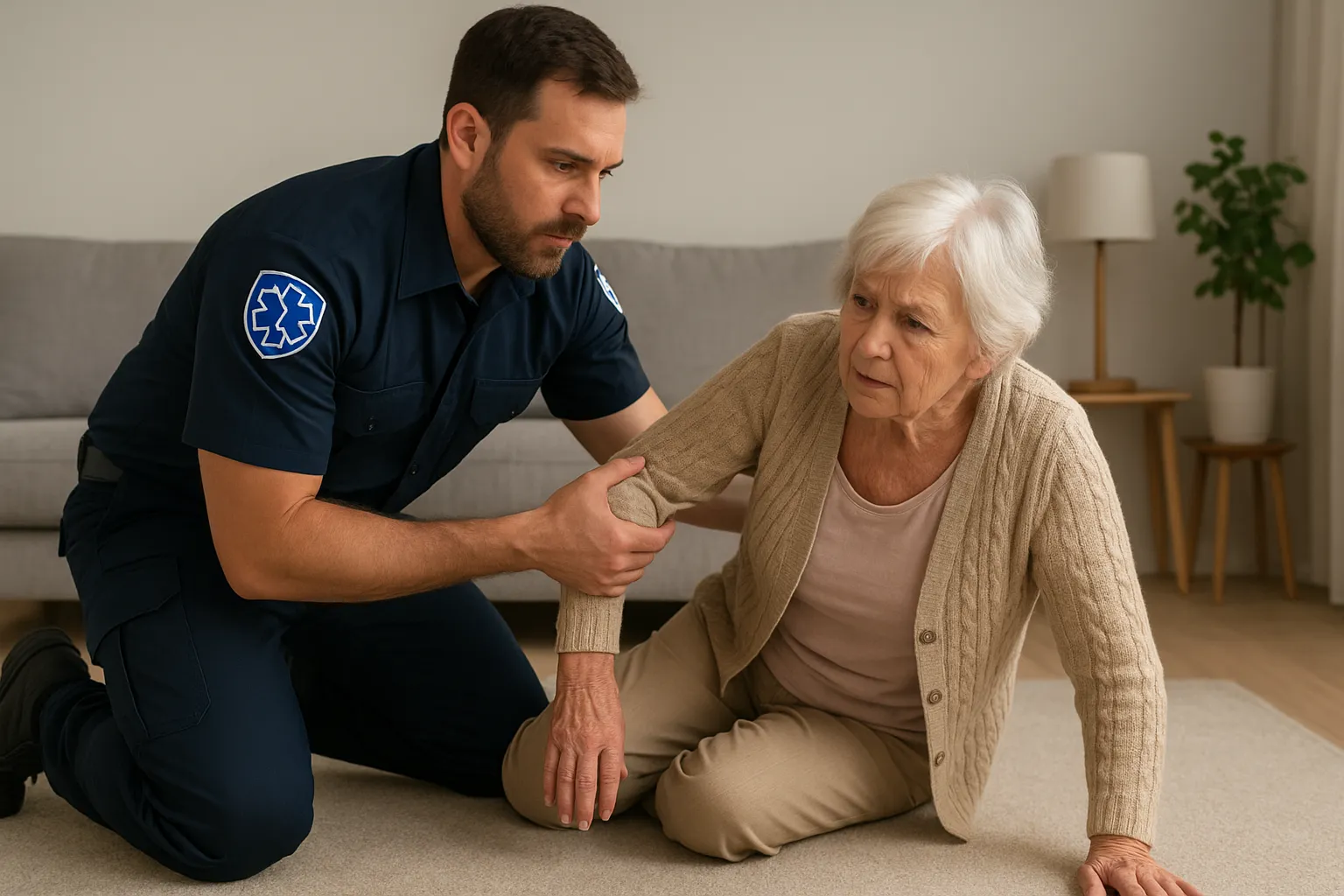When most people picture Emergency Medical Services (EMS), they imagine flashing lights, lifesaving interventions, and rapid transport to the hospital. Yet one of the most common calls EMS providers encounter is far less dramatic: the lift assist.
At first glance, these calls may seem simple—helping someone off the floor and ensuring they are safe. However, lift assists represent a critical intersection of patient safety, provider well-being, and community health. By treating these responses with the same professionalism as higher-acuity emergencies, EMS providers can reduce preventable injuries, identify hidden health risks, and improve long-term outcomes for patients.
What Is a Lift Assist in EMS?
A lift assist occurs when EMS is dispatched to help a patient who has fallen or is unable to move independently, but does not require—or declines—transport to the hospital. These calls are most frequent among older adults, who are at increased risk of falls due to age-related physical changes, chronic disease, and medication side effects.
While they may lack the urgency of cardiac arrests or traumatic injuries, lift assists are anything but insignificant. Falls are rarely “just falls.” They often serve as warning signs of underlying medical or environmental issues.
Why Lift Assists Should Not Be Overlooked
Patient Safety Comes First
Falls remain the leading cause of injury-related death in adults aged 65 and older in the United States (CDC, 2023). Research shows that patients who require EMS lift assists face elevated risks of repeat falls, hospitalization, and even mortality. One study found that older adults receiving EMS assistance after a non-injury fall had a one-year mortality rate greater than 50% (Simpson et al., 2020).
For EMS providers, this means every lift assist is an opportunity to perform a thorough assessment, identify potential injuries, and address underlying causes such as infection, dehydration, medication interactions, or environmental hazards.
Impact on EMS Systems
Lift assists may not seem like high-acuity calls, but frequent responses to the same patients can burden EMS resources. Every unit dispatched to a lift assist is one less available for time-sensitive emergencies. Identifying and tracking repeat calls can help agencies work with community health partners to provide preventive care, ultimately reducing system strain.
Protecting Provider Safety
Lift assists are deceptively dangerous for EMS personnel. Improper lifting techniques, awkward environments, and limited staffing increase the risk of musculoskeletal injuries—particularly back strains. A study by Lavender et al. (2019) highlights that patient-handling tasks remain one of the most physically demanding and injury-prone activities for prehospital providers.
Agencies must ensure that crews have access to the right equipment, encourage requesting additional manpower when needed, and provide training in ergonomic lifting strategies.
Best Practices for EMS Lift Assists
To maximize the value of lift-assist calls, EMS providers should focus on the following practices:
-
Perform a Full Assessment
Even if the patient reports no injury, obtain vital signs and conduct a focused exam. Look for subtle signs of injury or medical conditions that may have contributed to the fall. -
Document Thoroughly
Comprehensive documentation is essential for both patient safety and legal protection. Include patient condition, events leading to the fall, assessment findings, and any safety concerns noted. -
Educate and Refer
Patients may not realize the risks of repeated falls. EMS providers can play a vital role in connecting them to fall-prevention resources, physical therapy, medication reviews, or home safety assessments. -
Protect Yourself and Your Partner
Use appropriate lifting devices when available, follow agency protocols for safe movement, and never hesitate to request an additional unit if needed. Provider safety is patient safety. Check out my review of the Binder lift!
Lift Assists as Community Paramedicine Opportunities
Lift assists highlight the evolving role of EMS as more than just emergency responders. These calls can be reframed as part of a broader community paramedicine strategy. By identifying at-risk individuals and connecting them with preventive resources, EMS providers can reduce repeat calls, improve patient outcomes, and strengthen community trust.
This proactive approach benefits everyone: patients remain safer at home, EMS systems reduce call volume strain, and providers avoid preventable injuries.
Conclusion
While often overlooked, EMS lift assists are far from routine. They represent pivotal moments where EMS providers can identify hidden risks, prevent future injuries, and safeguard their own health in the process.
By treating lift assists with diligence, EMS professionals fulfill not just their emergency response role, but also their growing responsibility in preventive and community-based healthcare.
In short: a lift assist isn’t “just a fall”—it’s an opportunity to make a meaningful difference.
References
Burns, E. R., & Kakara, R. (2018). Deaths from falls among persons aged ≥65 years — United States, 2007–2016. Morbidity and Mortality Weekly Report (MMWR), 67(18), 509–514. https://doi.org/10.15585/mmwr.mm6718a1
Centers for Disease Control and Prevention. (2023). Important facts about falls. https://www.cdc.gov/falls/facts.html
Lavender SA, Conrad KM, Reichelt PA, Johnson PW, Meyer FT. Biomechanical analyses of paramedics simulating frequently performed strenuous work tasks. Appl Ergon. 2000 Apr;31(2):167-77. doi: 10.1016/s0003-6870(99)00040-x. PMID: 10711979.
Simpson PM, Bendall JC, Tiedemann A, Lord SR, Close JC. Epidemiology of emergency medical service responses to older people who have fallen: a prospective cohort study. Prehosp Emerg Care. 2014 Apr-Jun;18(2):185-94. doi: 10.3109/10903127.2013.856504. Epub 2014 Jan 8. PMID: 24401155.
✅ DistanceCME® offers accredited online continuing education for EMS providers. Courses on geriatric emergencies, patient safety, and community paramedicine can help you expand your skills and approach lift assists with confidence. Explore our course catalog today »

